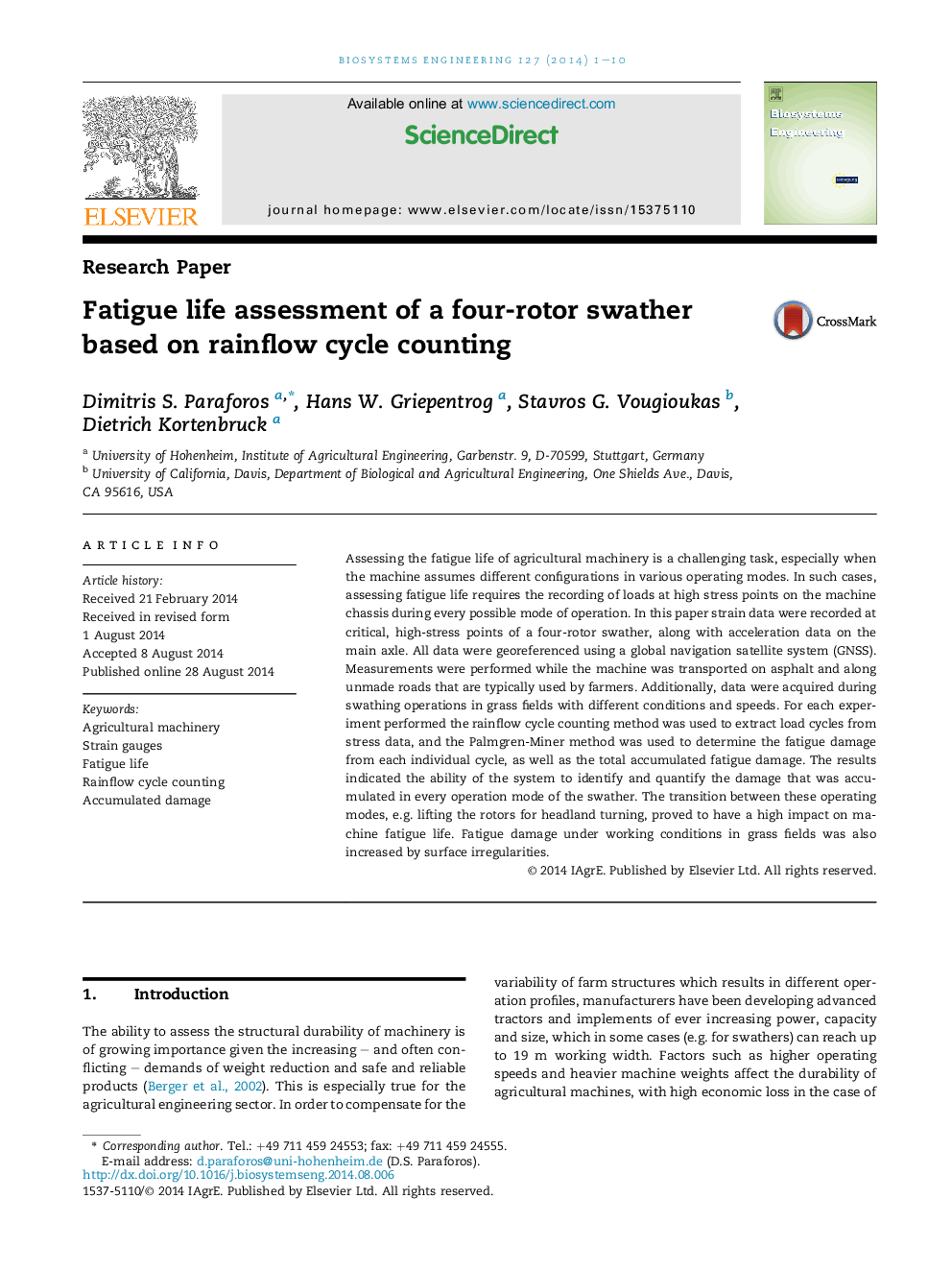| Article ID | Journal | Published Year | Pages | File Type |
|---|---|---|---|---|
| 1711100 | Biosystems Engineering | 2014 | 10 Pages |
•The load-time history of a swather was recorded under all possible operating modes.•Fatigue damage was calculated using rainflow cycle counting and linear damage rule.•All possible operating conditions should be considered to evaluate fatigue life.•Surface geometry affects the accumulated fatigue damage.
Assessing the fatigue life of agricultural machinery is a challenging task, especially when the machine assumes different configurations in various operating modes. In such cases, assessing fatigue life requires the recording of loads at high stress points on the machine chassis during every possible mode of operation. In this paper strain data were recorded at critical, high-stress points of a four-rotor swather, along with acceleration data on the main axle. All data were georeferenced using a global navigation satellite system (GNSS). Measurements were performed while the machine was transported on asphalt and along unmade roads that are typically used by farmers. Additionally, data were acquired during swathing operations in grass fields with different conditions and speeds. For each experiment performed the rainflow cycle counting method was used to extract load cycles from stress data, and the Palmgren-Miner method was used to determine the fatigue damage from each individual cycle, as well as the total accumulated fatigue damage. The results indicated the ability of the system to identify and quantify the damage that was accumulated in every operation mode of the swather. The transition between these operating modes, e.g. lifting the rotors for headland turning, proved to have a high impact on machine fatigue life. Fatigue damage under working conditions in grass fields was also increased by surface irregularities.
